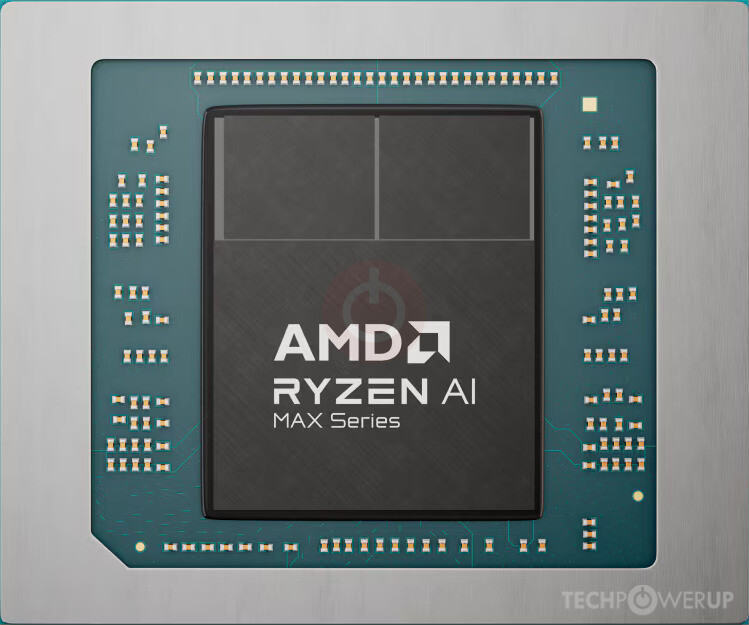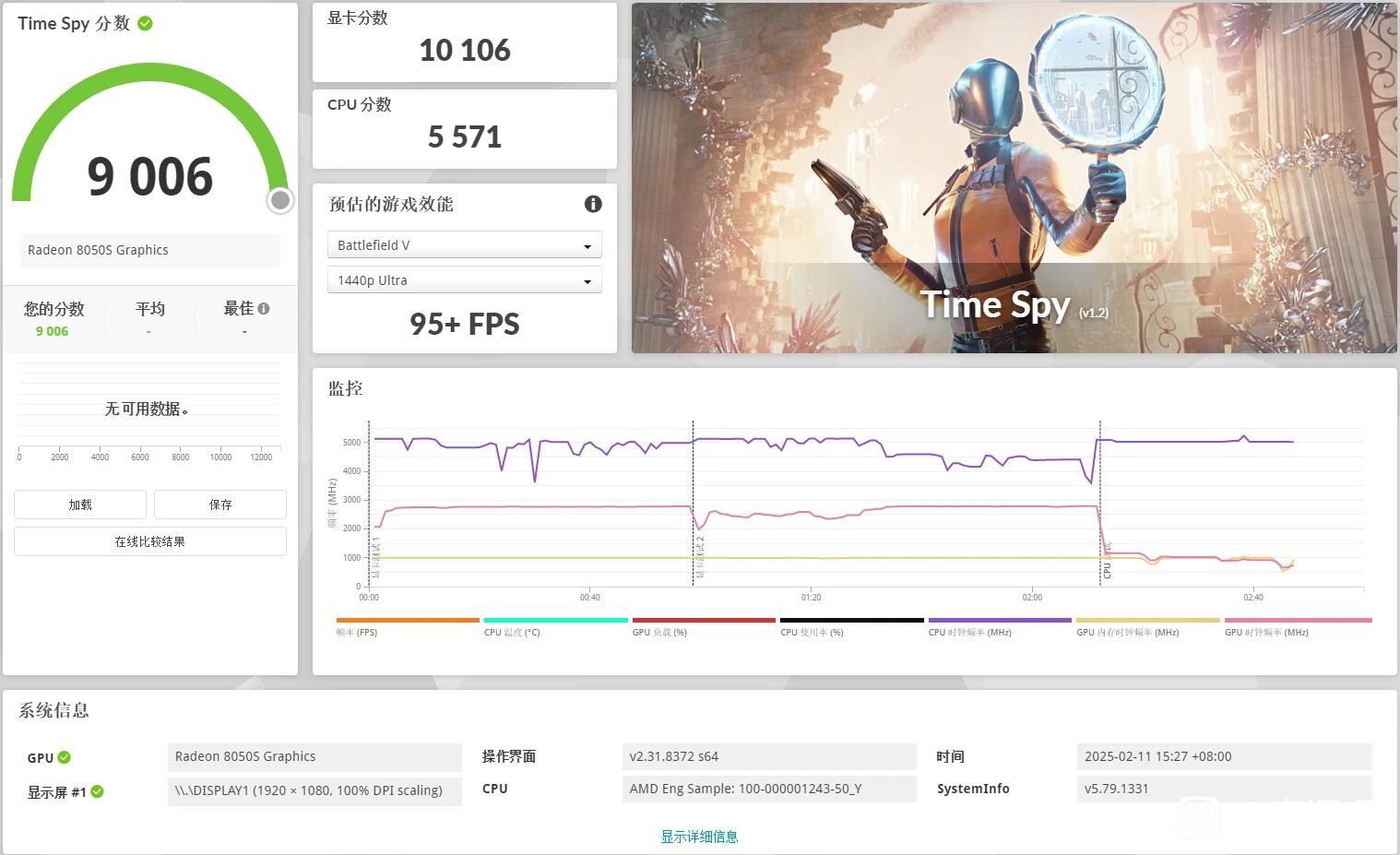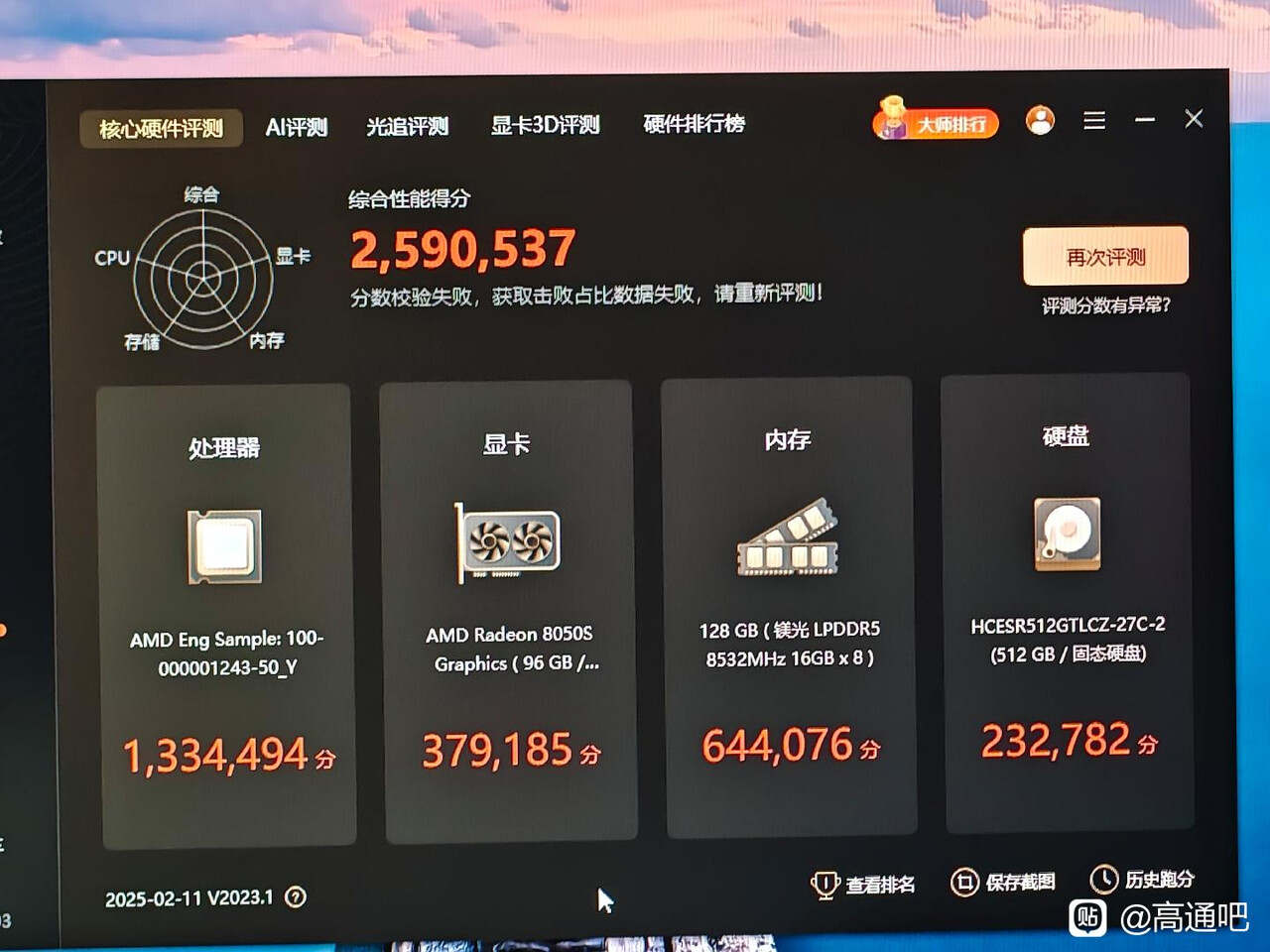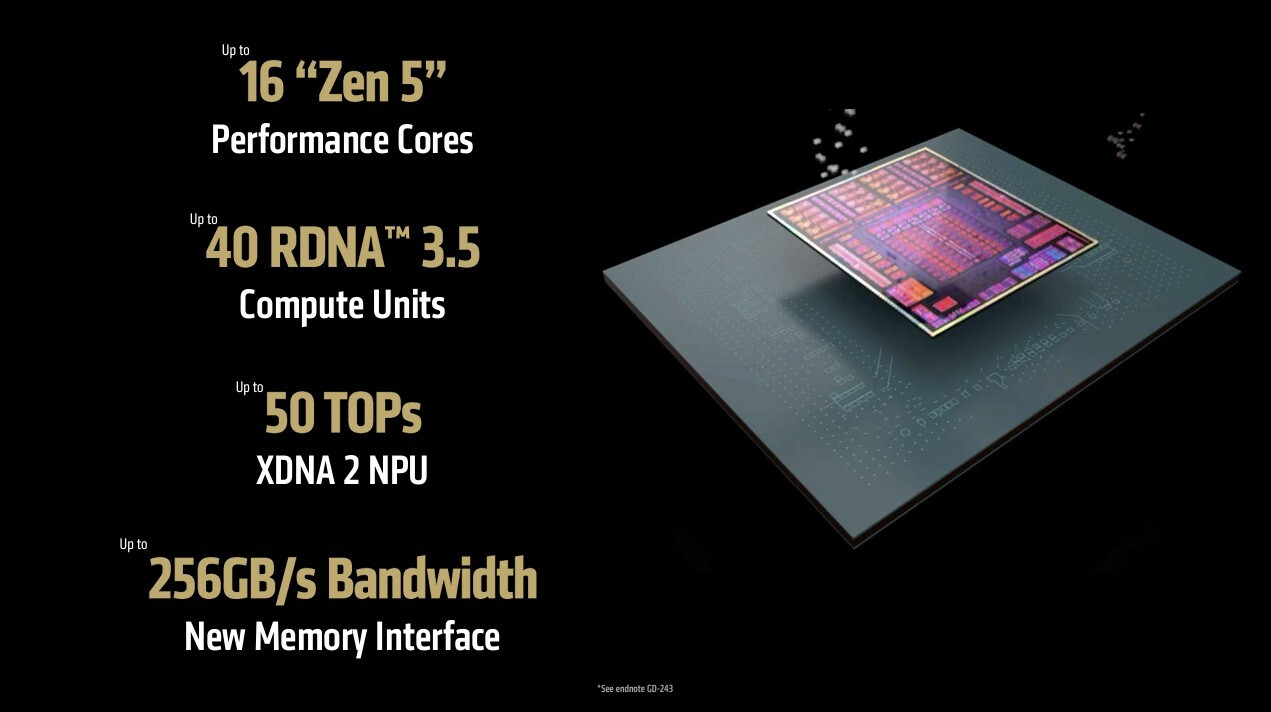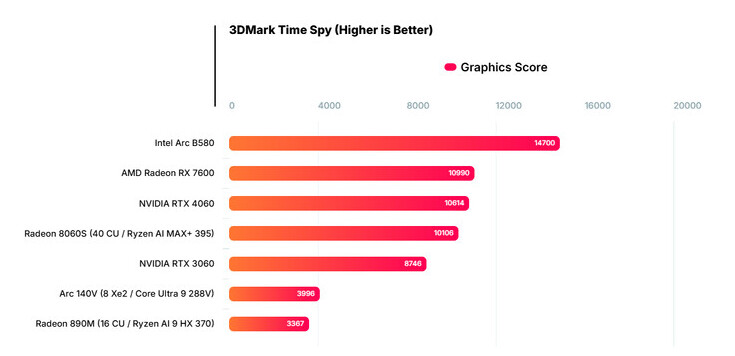At the end of last month, a guide for selling AMD's Ryzen AI MAX series was posted online, giving a sneak peek into the capabilities of the Radeon 8060S iGPU in 1080p gaming setups. Team Red appeared confident, claiming that their upcoming "RDNA 3.5" integrated graphics solution was up to 68% faster than NVIDIA's GeForce RTX 4070 Mobile GPU (under thermal constraints). It's always wise to approach first-party documentation with caution, as the PC hardware community often looks to independent sources for unbiased opinions. A Chinese leaker managed to get their hands on a pre-release laptop featuring an "Zen 5" AMD Ryzen AI Max+ 395 processor. By Wednesday evening, benchmark results were shared on the Tieba Baidu forums.
The leaker posted a screenshot from a 3DMark Time Spy session, without providing any additional details in writing. The on-screen diagnostics indicated a "Radeon 8050S" GPU and an "AMD Eng Sample: 100-000001243-50_Y" CPU. Wccftech verified this information and suggested that the OPN ID corresponds to a "Ryzen AI MAX+ 395 with the Radeon 8060S, rather than the AMD Radeon 8050S iGPU. The key difference between the two is that the Radeon 8060S has 40 Compute Units, while the Radeon 8050S has 32 Compute Units. The CPU for each iGPU is also different, with the tested model having 16 Zen 5 cores compared to the 12 Zen 5 cores in the Ryzen AI MAX 390.
According to the leaked screenshot, Team Red's Ryzen AI MAX+ 395 engineering sample achieved an overall score of 9006 in 3DMark Time Spy. The graphics score was 10,106, while the CPU score was 5571. The alleged Radeon 8060S iGPU performed slightly below NVIDIA's GeForce RTX 4060 Mobile dGPU, which had an average score of 10,614. The RDNA 3.5 40 CU iGPU seemed to outperform its related sibling, the Radeon RX 7600M XT dGPU (with 32 RDNA 3 CUs) scoring 8742 points. The Radeon 8060S fell short of the desktop Radeon RX 7600 GPU by 884 points.
Wccftech was impressed by the leaked data, noting that the iGPU had over double the cores compared to AMD's current top model, the Radeon 890M (16 Compute Units). The key advantage of this chip is its bandwidth of up to 256 GB per second, enhancing its graphics capabilities. They also highlighted the significant improvement in performance compared to the Radeon 890M, which averages 3367 points in 3DMark's database. This represents a 3x increase in performance, which is remarkable. Additionally, they pointed out that standard chips have a TDP of 30-45 W, while Strix Halo APUs will feature up to 120 W TDP, a 3x difference.
